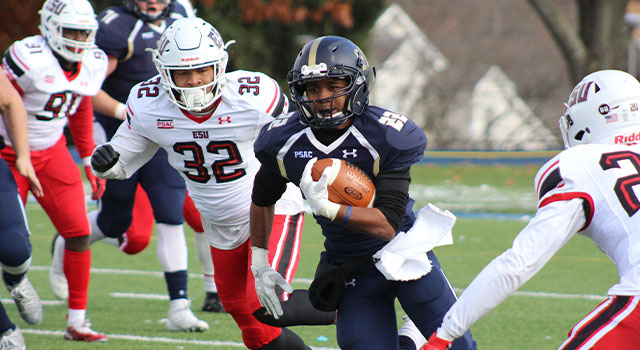 Did you know that 80% of what the brain processes during a sports game comes via the eyes, and that much of that input is transmitted from our peripheral vision?
Did you know that 80% of what the brain processes during a sports game comes via the eyes, and that much of that input is transmitted from our peripheral vision?
Peripheral vision, also known as peripheral awareness, enables us to detect and see things that aren’t right in front of us when we are looking straight ahead. Athletes with poor peripheral awareness may not realize that a player or ball is coming toward them from the side, putting them at higher risk of injury while playing sports.
One way to improve peripheral awareness is through sports vision training, a customized program that improves the communication between your eyes, brain, and body while playing sports. These learned visual skills can be useful in so many other areas of life as well. The sports vision program is offered by optometrists trained in sports vision training.
Why is Peripheral Vision Critical to Playing Sports?
Peripheral vision is an often overlooked aspect of sports performance. Well developed peripheral vision is essential in sports like football, where the players need to be aware of the sudden movement on either side of them. When football players dash across the field, their peripheral vision helps guide their path.
Improving peripheral vision can also help you avoid sports injuries. It can help athletes avoid or brace themselves for a collision or detect a fast-moving object approaching from the side. Additionally, sports vision training can help an athlete improve reaction time, hand-eye coordination, and processing speed.
Eye Exercises to Improve Peripheral Awareness
Here are 2 home-based eye exercises that may improve an athlete’s peripheral vision. Note: these are not a substitute for a comprehensive vision training program offered by a sports vision optometrist.
- Awareness Drill
One way to improve peripheral vision is to stop what you're doing and focus on being aware of what is in your peripheral fields.
- Stop and "be present"
- Pick a target to look at anywhere from 3 to 10 feet away
- While looking straight ahead, take note of what you can see around you - to your left and right, and up and down
- Test yourself: Pick out specific details, then confirm by looking directly at the object.
The goal of this exercise is to stretch your vision farther and enhance your ability to focus on things on either side of you. It's an easy drill that can lead to a noticeable improvement in your peripheral awareness.
- Wall Ball
This exercise requires just a wall and a ball, such as a tennis ball.
- Find a spot on the wall to look at, just above eye level
- Throw the ball against the wall, bouncing it from your left hand and catching it with your right hand and then back again
- While you are throwing the ball, keep looking at the spot on the wall and not directly at the ball. Instead, use your peripheral vision to detect the ball's flight and position in space
You will most likely drop the ball a few times while you get used to the exercise. It will take some practice to get your eyes to relax enough to be able to do this. Once you master one level, try to think of ways to challenge yourself by making this exercise more difficult. You should try doing this once a day, for 10-15 minutes.
Peripheral vision awareness is one of the visual skills most necessary for safety while playing sports. Having good peripheral vision awareness could keep you from getting hit by a frisbee at the park, or from taking a bad hit while on the court or field.
Taking the necessary steps to improve your peripheral awareness can not only improve your game but protect you from injury. Contact Dr. Joshua Watt to learn more about vision therapy.
Impact Vision Therapy serves patients from , Colorado Springs, Castle Pines, and Parker, throughout Colorado.
